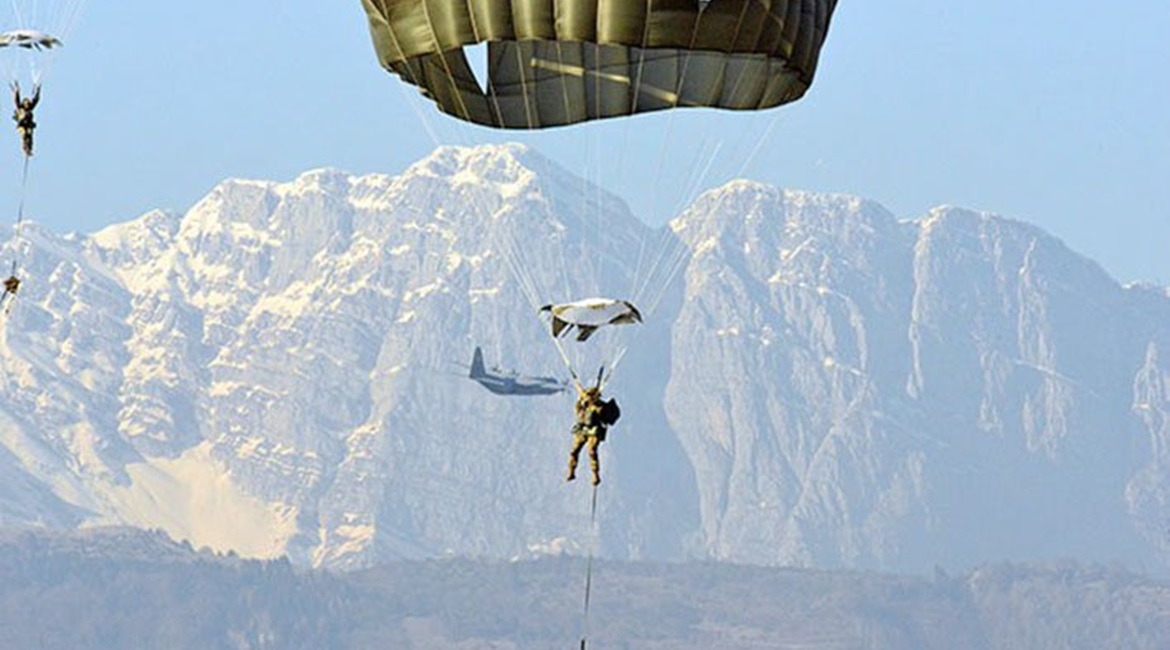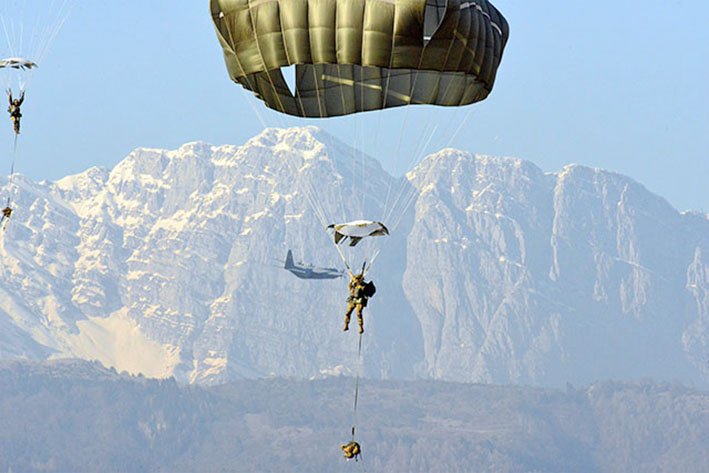
US Army leadership is beginning to include foreign allies and partners in efforts to modernise weapons, while also seeking to overcome some interoperability challenges.

US Army paratroopers descend onto Juliet Drop Zone, Pordenone, Italy, in February 2019. The service is working to include foreign partner and ally input into its modernsation plans and working through some interoperability challenges. (US Army)
During 7 May at an Association of the US Army breakfast, General Mike Murray, the commander of new Futures Command, took centre stage to discuss service modernisation efforts and noted that “15 or 20” different countries have requested a liaison officer presence at the command’s headquarters in Austin, Texas. While some are working with the cross-functional teams, the four-star general said he is “hesitant” to fully “embed” them there, in part because as the head, he feels as if he is “a start up trying to manage a merger”.
Instead of focusing on the equipment modernisation piece right now, he noted that it is better for them to be on the east coast of the country participating in the concept and doctrine piece of the equation.
The service has identified six modernisation priorities– Long-Range Precision Fires, Next-Generation Combat Vehicle, Future Vertical Lift, networking, air and missile defence, and soldier lethality – with 30-plus associated modernisation initiatives. As the service moves them forward, Gen Murray said that in addition to allies’ and partners’ bids to participate in the development side of the effort, when it comes to fires and communication, they are “concerned with interoperability” challenges.
Looking to read the full article?
Gain unlimited access to Janes news and more...


